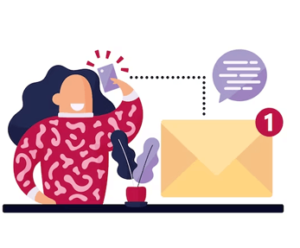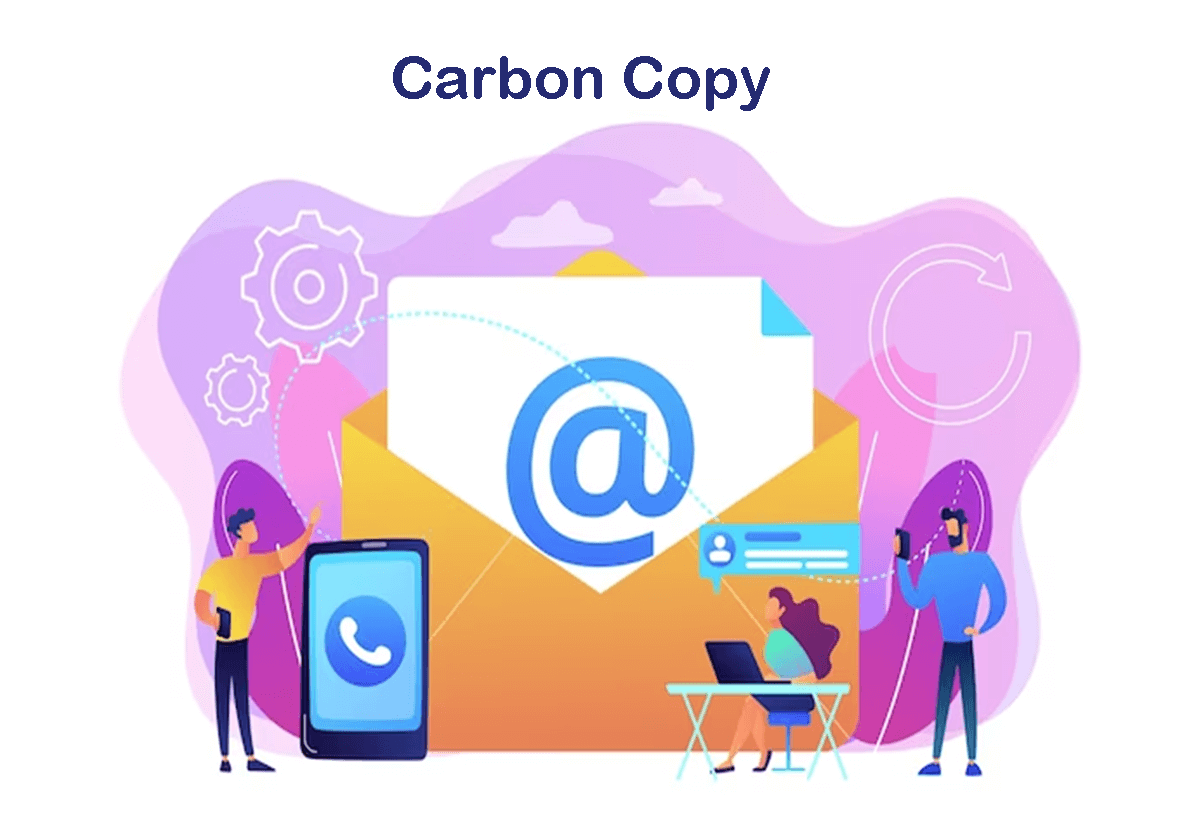What's Inside?
What does CC mean?
In email marketing, “CC” stands for “carbon copy.” It refers to the practice of including additional recipients in an email message by adding their email addresses in the “CC” field. When you add someone as a CC recipient, they can see the other recipients who were also included in the “To” and “CC” fields.
The CC function is often used when you want to keep someone informed or updated about a particular email conversation or project, but they are not the primary recipient. For example, if you are sending an email to your team, you might CC your manager to keep them in the loop. However, it’s important to use CC judiciously, as too many recipients can make the email confusing or overwhelming.
Examples of CC in email
Here are some examples of when CC (carbon copy) might be used in an email:
- A project update: An email to a client about a project update could CC the project manager or team members so they are aware of the progress and can follow up if necessary.
- A meeting request: An email requesting a meeting between two parties might CC an assistant or other parties who will need to know the time and location of the meeting.
- A customer service inquiry: An email from a customer to a company’s customer service team might CC a manager or supervisor to ensure that the issue is resolved promptly.
- A job application: An email containing a job application might CC a human resources representative or hiring manager so they are aware of the application and can follow up if necessary.
In each of these scenarios, the CC field is used to keep additional parties informed about the email’s content or to ensure that the email is seen by someone who can take action or provide additional information.
When should you use CC in email?
 In email marketing, you can use CC to keep other interested parties in the loop on specific email conversations or projects. For example, if you are sending a promotional email to your subscribers, you might CC your marketing manager or other team members who are involved in creating the campaign.
In email marketing, you can use CC to keep other interested parties in the loop on specific email conversations or projects. For example, if you are sending a promotional email to your subscribers, you might CC your marketing manager or other team members who are involved in creating the campaign.
However, it’s essential to use CC judiciously to avoid overwhelming recipients with too much information. Including too many people in the CC field can also lead to privacy concerns, as everyone can see who else was included in the email.
So, when deciding whether to use CC in email marketing, consider the purpose of the email, who needs to be informed, and whether the information is sensitive or confidential. If you are unsure about whether to include someone as a CC recipient, it’s always a good idea to ask them first if they would like to be included.
How to Use CC
When using CC in email marketing, it’s important to do so judiciously and follow best practices for email etiquette. Here are some tips for using CC in email marketing:
- Limit the number of recipients: Only CC those who need to be kept informed of the email’s contents. Including too many people in the CC field can lead to cluttered inboxes and confusion.
- Make it clear why someone is being CCed: Explain in the email why the recipient is being CCed and what their role is in the communication.
- Consider privacy concerns: If the email contains sensitive information, avoid CCing anyone who does not need to know.
- Use BCC for mass emails: If you’re sending an email to a large group of people, use BCC (blind carbon copy) instead of CC to protect recipients’ privacy and prevent spamming.
- Be mindful of storage and costs: Keep in mind that CCed emails can take up unnecessary storage space and may result in additional costs for email services that charge per email sent.
By following these guidelines, you can effectively use CC in email marketing to keep relevant parties informed without cluttering inboxes or violating privacy concerns.
What are the problems with using CC in Email?
There are several problems with using CC in email communication:
- Cluttered inbox: When you CC someone on an email, a copy of the same email is sent to them, which can quickly clutter their inbox, particularly if you CC them on every outgoing email.
- Privacy concerns: When you CC someone on an email, everyone else in the CC field can see the recipient’s email address, which can be a breach of privacy, especially if sensitive information is being discussed.
- Unnecessary storage space: CC’d emails take up unnecessary storage space in the email account, particularly if there are attachments. This can result in a significant wastage of storage space.
- Wastage of email credits: If you use an email service that charges per email sent, every recipient mentioned in the CC field incurs an additional cost, which can add up quickly.
- Confusion and miscommunication: Including too many people in the CC field can make the email confusing and overwhelming, leading to miscommunication and delays in decision-making.
While CC can be useful for keeping people informed, it’s essential to use it judiciously and consider other alternatives, such as BCC or group email lists, to avoid these problems.
When not to CC someone in an email
 There are several situations where it’s not appropriate to CC someone in an email:
There are several situations where it’s not appropriate to CC someone in an email:
- Privacy concerns: If the email contains sensitive information that should not be shared with anyone other than the primary recipient, CC’ing someone else is not appropriate.
- Too many recipients: If there are too many people in the CC field, it can lead to confusion and miscommunication. Therefore, it’s essential to limit the number of recipients in the CC field to those who truly need to be kept informed.
- Irrelevant information: CC’ing someone on an email that contains irrelevant information or does not require their attention can waste their time and clutter their inbox.
- Disagreements or conflicts: If the email involves disagreements or conflicts, CC’ing someone else can escalate the situation and make it more difficult to resolve.
- Personal or sensitive matters: If the email involves personal or sensitive matters, it’s best to avoid CC altogether and communicate directly with the recipient.
It’s essential to use CC judiciously and only include those who need to be kept informed. Otherwise, it can lead to a cluttered inbox, privacy concerns, confusion, and other problems.
What is the point of CC in email?
The point of CC (carbon copy) in email is to allow the sender to send a copy of the email to additional recipients, in addition to the primary recipient listed in the “To” field. The CC field can be useful for keeping other interested parties informed about the email’s content and ensuring that they have a copy of the email for their records.
For example, if you’re sending an email to a client about a project, you might CC your project manager or team members so they are aware of the email’s contents and can follow up if necessary. This can help to keep everyone on the same page and ensure that important information is shared.
It’s important to use CC judiciously and avoid sending unnecessary emails or including too many people in the CC field. This can lead to cluttered inboxes, privacy concerns, and confusion. It’s important to consider who needs to be kept informed and limit the number of recipients accordingly.


